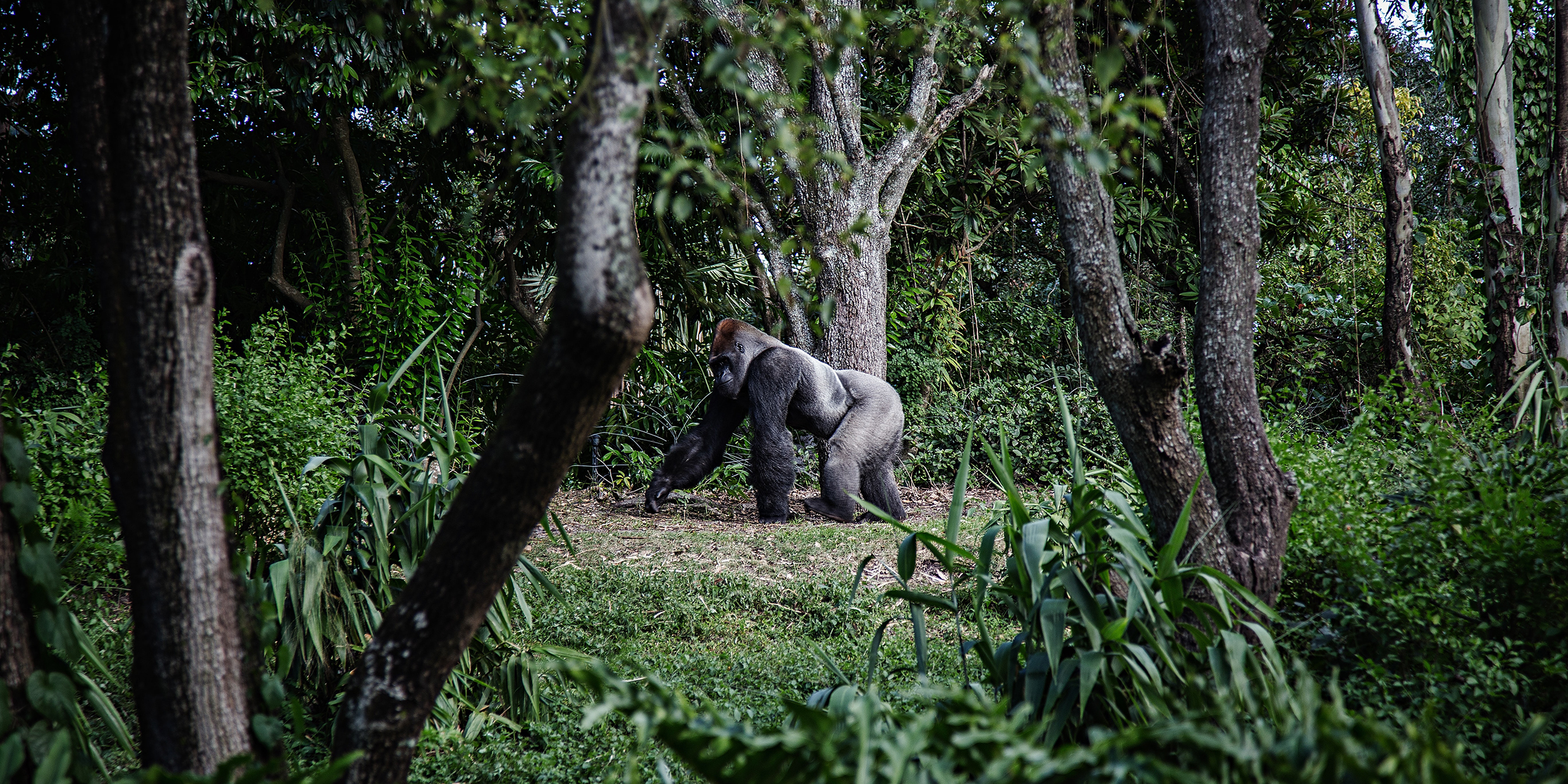Originally published 15 August 2004
Chimps and gorillas get about by knuckle-walking. They curl back their fingers and bear the weight of their upper bodies on their knuckles, which permits them a four-legged scoot on the ground while retaining long, grasping fingers for swinging Tarzan-like among the branches. A nice compromise between life in the trees and life on the ground.
Recent anatomical evidence from fossils suggests that our immediate prehuman ancestors, Australopithecus anamensis and A. afarensis, descended from knuckle walkers. They took the adaptation one step farther — walking upright on two feet — and that was a crucial step on the way to being human.
At he beginning of his Metamorphoses, the Roman poet Ovid tells how Prometheus made humankind by mixing earth and water. He then adds: “Whereas other animals hang their heads and look at the ground, Prometheus made man erect, bidding him look up to the heavens and lift his head to the stars.”
Paleontologists fiercely debate the evolutionary origins of upright posture, but all agree that standing on our own two feet is a big part of what makes us human. Having hands free for tool-making and weapon-wielding was surely a stimulus for brain development, but — as Ovid suggests — we shouldn’t underestimate the ability to cock our heads back and look into the star-spangled night.
The earliest humans kept an eye on the heavens and found there something that is not so obvious on earth.
The nitty-gritty of life works itself out rather close to the ground. Finding food. Attracting mates. Raising offspring. Battling predators. Avoiding fire, flood, volcanism, lightning, disease. The precariousness of childbirth. It is all rather unpredictable. The sting of the hornet. A fall of stones. The unamorous mate. A waterhole gone dry.
Nose to the ground, the world looks dicey indeed.
Against these terrestrial uncertainties the patterns of the constellations are utterly constant. The Sun and Moon move with predictable regularity. The planets traverse the dome of night in stately and discernible courses. Can it be such a surprise then that our ancestors made of the heavens the abode of gods and immortal souls?
Seeking to mediate the worlds of gods and men our ancestors began the systematic study of the stars, observing their comings and goings. Religious festivals and rites were tied to the rising and setting of sun, moon, and stars. Many of the earliest human artifacts are celestial alignments of stone. An ancient inscribed bone found in Africa supposedly records phases of the moon.
As science historian Jacob Bronowski has pointed out, the stars might seem improbable objects to have aroused such curiosity. The human body is closer at hand and a more obvious candidate for investigation. But astronomy advanced as a science before long before biology and medicine, and early medicine turned to the stars for signs and omens. Behind the disorder of terrestrial experience, the stars proclaim the rule of law.
Modern human civilization is made possible by the coordination of mind and hand — a mind that discerns a world of law in the apparent chaos of nature, and a hand that holds a tool to exploit the law. More simply: science and technology.
We have learned, to our initial disappointment, that the heavens are not the Elysian Fields of gods and immortal bliss imagined by the ancients, but rather the infinite spaces that so terrified Pascal. Yet we have learned to love those spaces, and even to explore them, sending astronauts and experimental vehicles out among the celestial spheres, and building huge telescopes on Earth to extend the range and sensitivity of human vision.
We have become, in effect, children of the Milky Way.
This is the glory of the knuckle walkers, those lumbering prehuman ancestors whose agile, grasping hands were formed to swing from limb to limb, and who now and then lifted their knuckles from the earth to run with weapon in hand in pursuit of a gazelle. Grasping hands and upright posture — two stimuli for brain development that let our minds soar into the far-flung universe of the galaxies.



